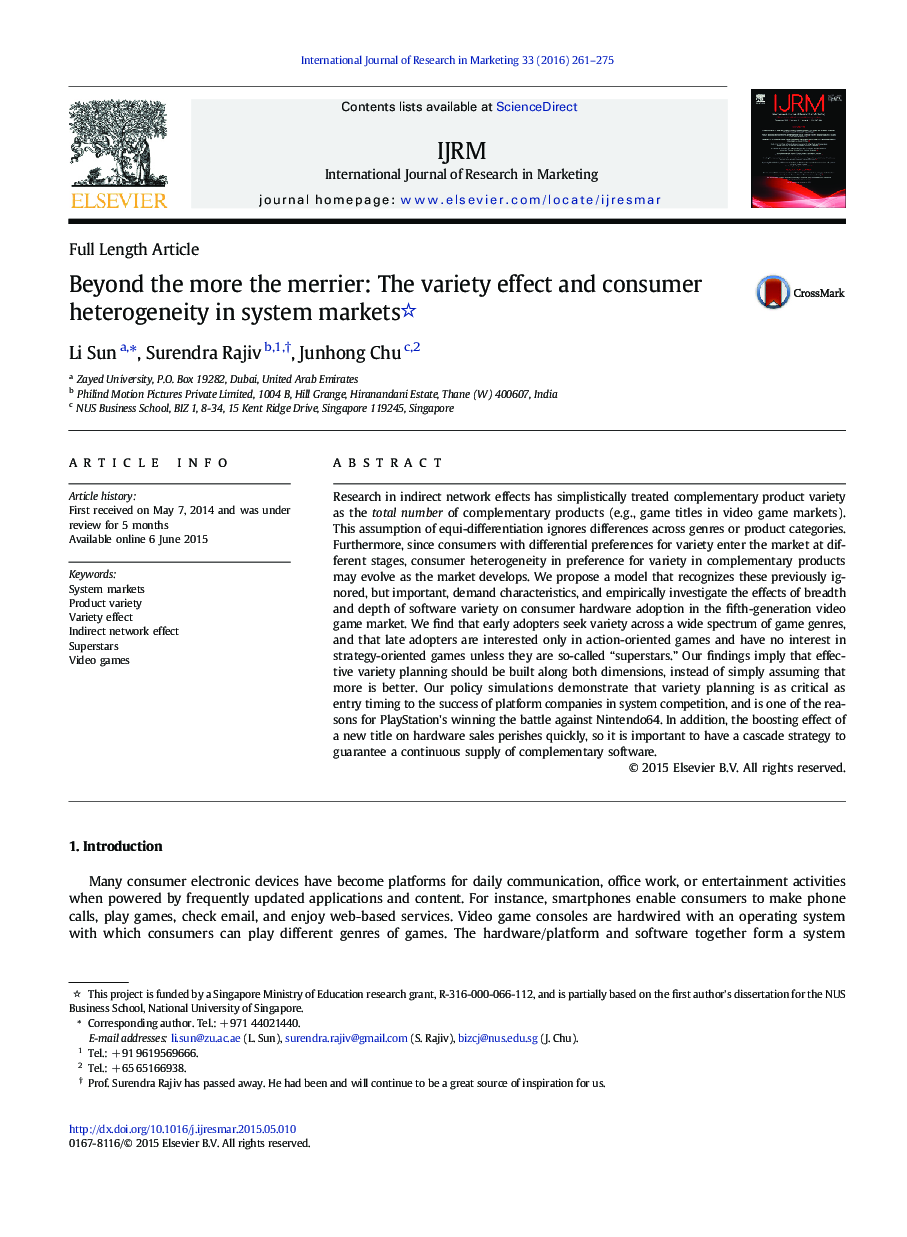| Article ID | Journal | Published Year | Pages | File Type |
|---|---|---|---|---|
| 880034 | International Journal of Research in Marketing | 2016 | 15 Pages |
Research in indirect network effects has simplistically treated complementary product variety as the total number of complementary products (e.g., game titles in video game markets). This assumption of equi-differentiation ignores differences across genres or product categories. Furthermore, since consumers with differential preferences for variety enter the market at different stages, consumer heterogeneity in preference for variety in complementary products may evolve as the market develops. We propose a model that recognizes these previously ignored, but important, demand characteristics, and empirically investigate the effects of breadth and depth of software variety on consumer hardware adoption in the fifth-generation video game market. We find that early adopters seek variety across a wide spectrum of game genres, and that late adopters are interested only in action-oriented games and have no interest in strategy-oriented games unless they are so-called “superstars.” Our findings imply that effective variety planning should be built along both dimensions, instead of simply assuming that more is better. Our policy simulations demonstrate that variety planning is as critical as entry timing to the success of platform companies in system competition, and is one of the reasons for PlayStation's winning the battle against Nintendo64. In addition, the boosting effect of a new title on hardware sales perishes quickly, so it is important to have a cascade strategy to guarantee a continuous supply of complementary software.
